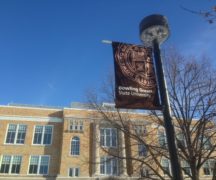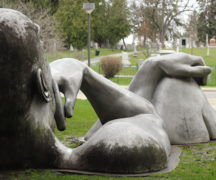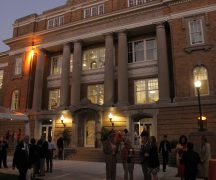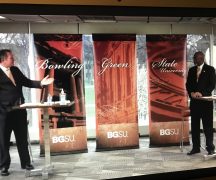By DAVID DUPONT
BG Independent News
Bowling Green State University constructs buildings with a sense of environmental awareness.
The university requires all new structures meet LEED Silver standards, and some including the Stroh Center, and Greek Village exceed that standard, said Ryan Miller, senior project manager in the Office of Design. He’s hoping with a few changes, the Kuhlin Center will also gain the gold designation.
When buildings come down, the university and its contractors also try to be environmentally aware.
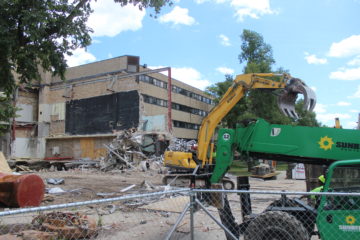 Right now Miller, who worked on the Student Recreation Center renovation and the Wolff Center among other projects, is overseeing the demolition of West Hall and the Family and Consumer Science Building. By the time students arrive on campus next August there will be empty space where the two buildings stood.
Right now Miller, who worked on the Student Recreation Center renovation and the Wolff Center among other projects, is overseeing the demolition of West Hall and the Family and Consumer Science Building. By the time students arrive on campus next August there will be empty space where the two buildings stood.
Miller said that the university’s design consultants and contractors are attuned to LEED principles.
The demolition isn’t a LEED project, but as in those projects, the contractors are aiming to recycle and reuse as much material as possible.
The original plan was to take brick and concrete from the buildings, crush it onsite, then use it as engineered fill in the basements of the razed structures.
Instead in order to save time, the contractors will truck it to the landfill for construction waste and trade it for engineered fill that’s already stockpiled there. That fill will have to meet engineering approval, Miller said. The brick and concrete from BGSU will then be crushed to be used as engineered fill on other projects.
The holes will be filled up to five feet from flush to the ground. Then soil will be laid on top. Miller said a landscape architect said that’s what’s required to plant trees on the site.
As for other material that may be recycled, “that’s left up to the contractor,” he said.
“The hope is the university receives some benefit in lower bids with contractors that are planning to recycle materials” and sell them. “That’s why you see the piles being separated out.”
Anything metal, including copper, he said, can be recycled.
Even before demolition began, the university sold as much furnishings and equipment as it could through GovDeals.com.
Still there are limits. Some furnishings were shipped to landfill as was dry wall, insulation, and plaster. Also, all the asbestos and hazardous material removed early on were unsalvageable
After the project is completed, the contractor will present a manifest of all the material diverted from the landfill.
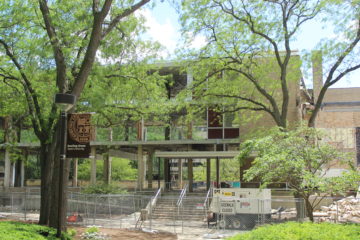 The demolition of West is complicated by its proximity to Founders Hall. Only an inch of air space is between the two buildings. Once West Hall is down, the foundation of the dorm will be checked. If it is sound, as expected, then the imprints of the buildings will be filled in.
The demolition of West is complicated by its proximity to Founders Hall. Only an inch of air space is between the two buildings. Once West Hall is down, the foundation of the dorm will be checked. If it is sound, as expected, then the imprints of the buildings will be filled in.
Also, utility lines run through Family and Consumer Sciences and West Hall that connect to other buildings, so power has be disrupted in the area as the area is rewired.
In doing the construction, Miller said, workers discovered that a utility tunnel that runs between the two buildings needs work.
In order to save money, several other smaller projects were bid with the demolition. They include filling in a mechanical well near Founders that’s no longer needed because the dorm is now connected to the university’s central chiller.
Also, Parking Lot 11 next to Founders, off Thurstin, will get repaved. That lot will be open temporarily for move in, then closed until the work is done sometime in October.
The university’s long-term plan for the empty space left by razing West Hall and Family and Consumer Science has not been set. For now space will become an irrigated lawn with two rows of trees, though it’ll probably be a patch of brown this fall. Officials have discussed creating a memorial garden on the site.


